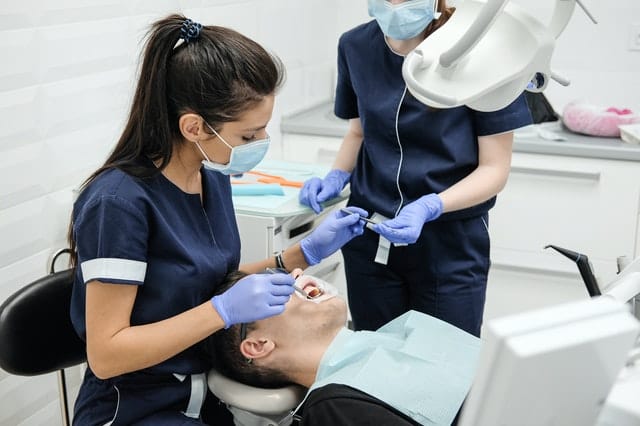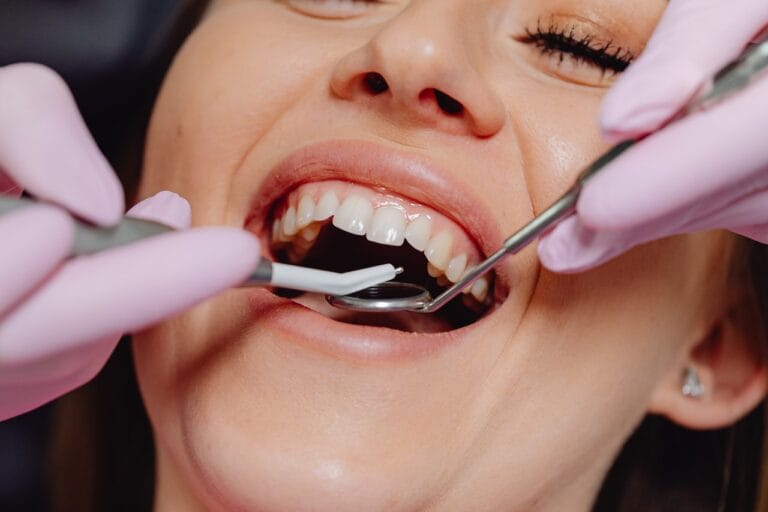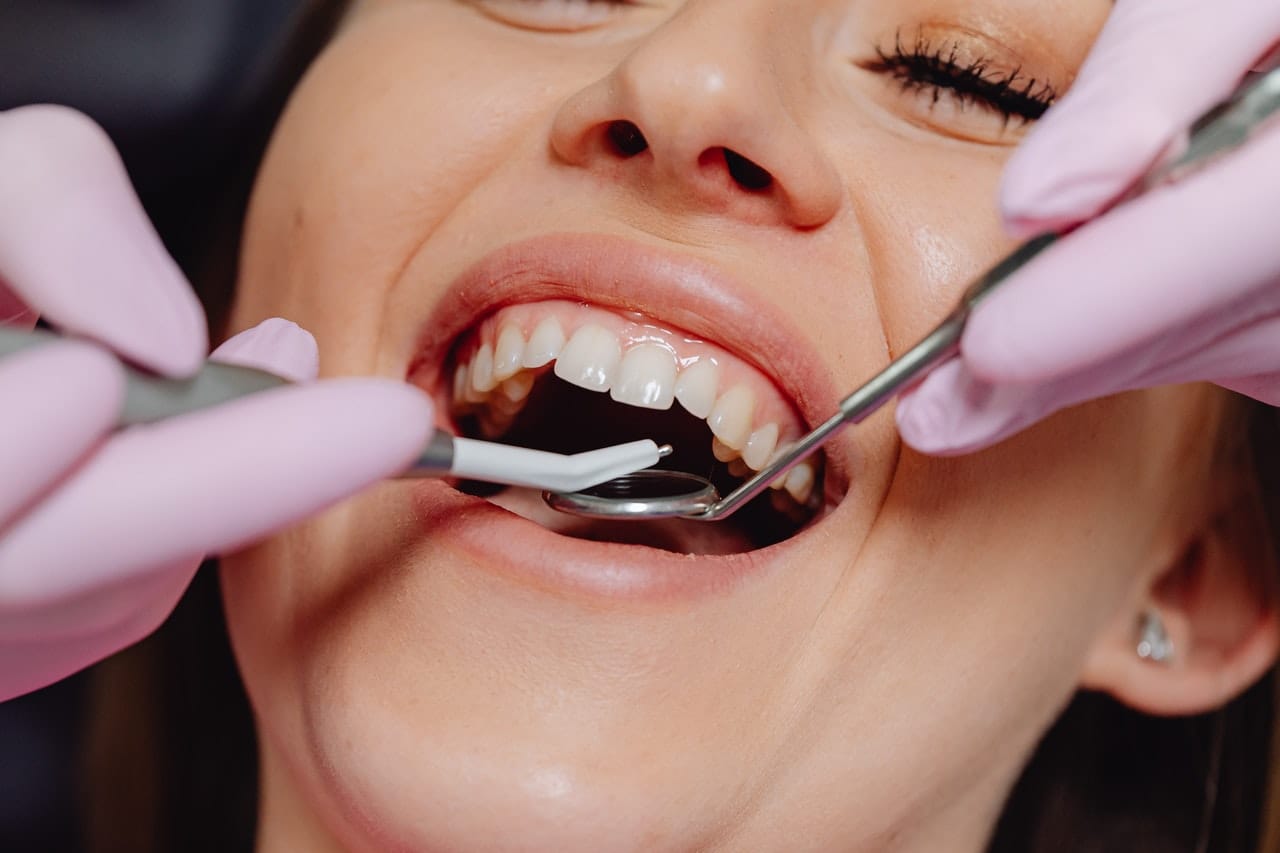Laser gum treatment seems like the perfect cure for gum disease. It’s quick, painless, and effective. But, surely, it’s a little too good to be true, right? What are the side effects of laser gum treatment that nobody talks about?
Discover what you should actually expect when you get laser gum treatment, so you can be well-prepared. Find out everything from how painful it is to how much time it takes to recover.
What Diseases Can Laser Gum Treatment Help?
People suffering from periodontitis are the best candidates for laser gum treatment.
Periodontitis is a type of serious gum condition where the soft tissue around your teeth is damaged. If left untreated, gums will recede and the disease can start to destroy the bone that supports the teeth in your mouth.
Periodontal disease usually starts off as gingivitis. But, unlike gingivitis, periodontitis isn’t reversible because it involves bone loss.
Over time, periodontal disease can lead to both the loosening of teeth and, in the most serious cases, the complete loss of teeth.
However, periodontitis isn’t the only oral problem laser gum treatment can help. Patients with mouth sores from chemo can also find relief with LANAP®.
What Is Laser Gum Treatment And How Can It Help?
Laser-Assisted New Attachment Procedure (LANAP®) has become one of the best and more popular treatments for periodontal disease.
This non-invasive treatment uses a free-running, variable pulsed laser to achieve laser-assisted regeneration (LAR). It can help rebuild lost gum tissue by encouraging regrowth.
In simple terms, the LANAP® process involves:
- Assessment: where your dentist determines the level of treatment needed for each individual tooth by probing the gums.
- Sanitizing: Laser treatment to eliminate infection-causing bacteria.
- Scaling: Ultrasonic scalers to remove plaque and tartar from the teeth.
- Reconnection: Laser treatment to connect gum tissue back to the root from which it has receded.
- Grinding: Certain sections of the tooth are ground down to prevent the formation of new harmful tartar.
Generally, depending on the level of damage, a session of the LANAP® procedure lasts an hour. However, your time in the chair is only the beginning of your healing. Laser gum treatment’s true power happens when your tissue regenerates as part of the recovery process.
The Side Effects of Laser Gum Treatment
As with any kind of surgical procedure, you can expect to experience a small degree of laser gum treatment side effects even in a completely successful treatment.
Laser gum surgery should be completely painless. However, it’s still a medical treatment. Patients describe an itching or burning sensation when the laser’s directed at their gums.
Other side effects of LANAP® can also happen after the procedure as well as during. You can expect to experience some degree of one, or a combination of the following:
- Light bleeding
- Slight swelling
- Partial gum discoloration
That’s it.
The lack of side effects proves that laser gum treatment is truly minimally invasive.
Luckily, the side effects of laser gum treatment don’t last long. The discomfort is only temporary and will disappear over time as a part of the natural healing process.
As you can see, laser gum treatment doesn’t have a lot of negative side effects. The procedure itself is quick, painless, and incredibly effective. And you don’t need to worry about a long recovery period either
Recovery From Laser Gum Treatment
Just like the procedure itself, the recovery from laser treatment is very quick. All of the side effects from LANAP® should disappear within 24 hours.
Of course, the regeneration itself isn’t that quick. It takes your gums a couple of weeks to grow back, even with the lowest level of damage.
However, this 24-hour recovery period is much faster than traditional gum surgery would be.

Laser Gum Treatment vs. Traditional Surgery
Laser gum treatment is a successful and effective form of periodontal disease treatment. And there’s a reason why people choose LANAP® over traditional surgery.
Depending on the level of damage, traditional gum surgery can involve:
- Flap Surgery: During this operation, the dentist makes tiny incisions in your gums to lift the tissue back to its original place.
- Soft Tissue Grafting: When your gum line recedes, you may need a graft to reinforce the area that has lost its support. The dentist removes tissue from elsewhere in the mouth and reuses it at the affected site.
- Bone Grafting: Bone grafting becomes necessary when the disease has destroyed the bone surrounding a tooth root. The dentist either uses small fragments of your own bone or even synthetic or donated bone. The graft shores up the bone to ensure that your teeth remain secure.
- Guided Tissue Regeneration: This procedure encourages the regrowth of bone that has been destroyed by bacteria. It often involves the placing of biocompatible fabric between your tooth and existing bone, which allows the bone to grow back healthily.
As you can imagine, traditional gum surgery is a lot more painful and invasive than laser treatment. And its side effects also last longer. It takes 2-4 weeks for your mouth to recover.
Not to mention the anesthesia, stitches, and antibiotics that you need to suffer through. All of these horrible side effects should convince you that LANAP® is a much better alternative.
Talk to a NYC Dentist About Laser Gum Treatment
While LANAP® can be itchy and cause some swelling, the side effects of laser gum treatment are dwarfed by the painful and long-lasting side effects of traditional treatments.
That’s why you should opt for LANAP®, if you can.
If you live in New York City, and you’re considering getting laser gum treatment, the best place to get it is Advanced Dental Arts in Greenwich Village.
Our practice specializes in LANAP®, and we’d be more than happy to talk to you about the procedure. Let us put your mind at ease about the side effects of this helpful procedure.
Reach out to us to find out if LANAP® can help you!






